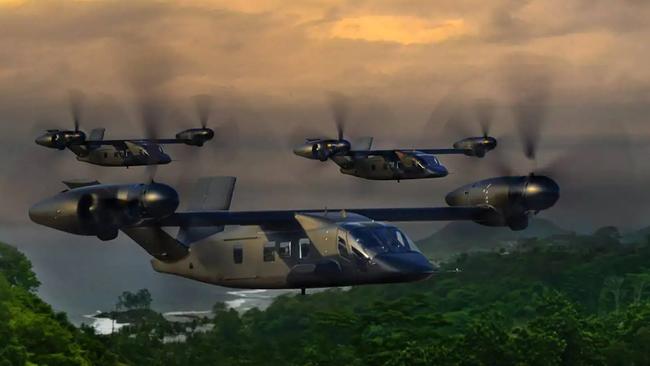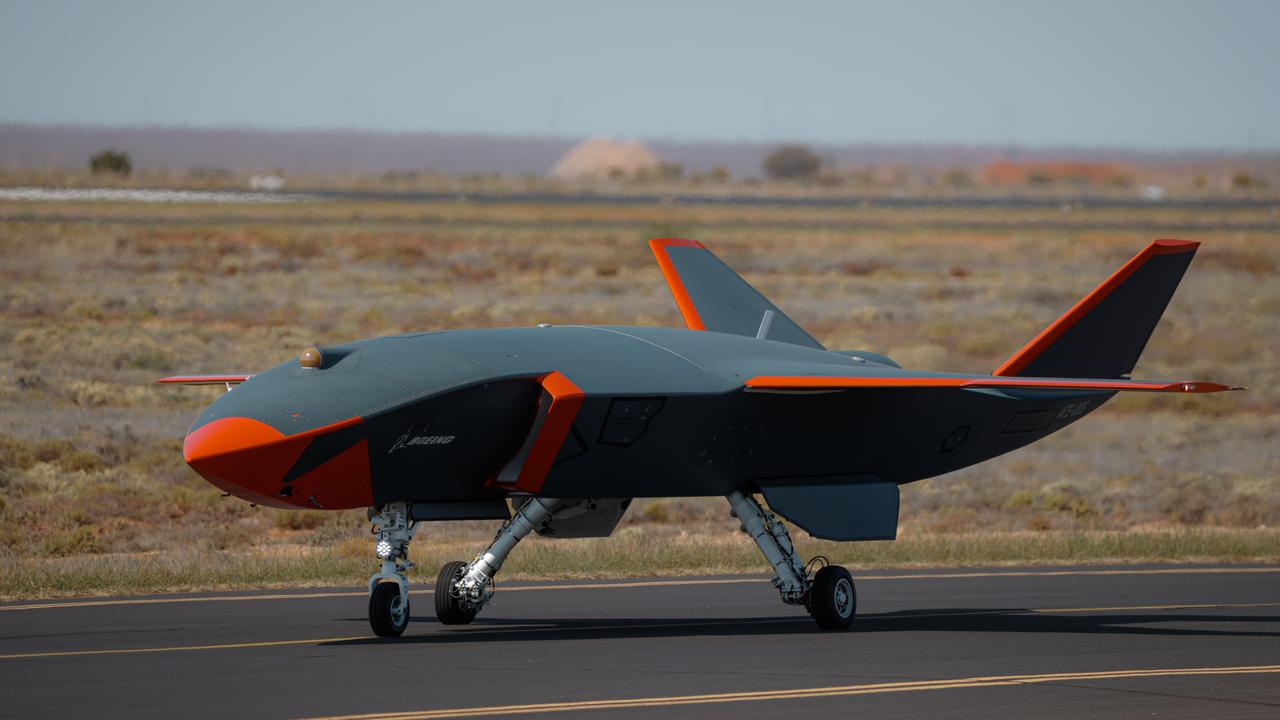Tilt-rotor chopper ‘a game-changer’
US company Bell Textron is preparing the market here for the sale of its new FLRAA twin-engined V-280tilt-rotor helicopter. It is an eventual replacement for about 2000 Black Hawk helicopters in a deal that could be worth $US40bn ($64bn).

US company Bell Textron is preparing the market here for the sale of its new FLRAA tilt-rotor helicopter. Last year, the US Army selected the twin-engined V-280 as the winner in its Future Long-Range Assault Aircraft (FLRAA) program.
It is an eventual replacement for around 2000 Black Hawk helicopters in a deal that could be worth $US40bn ($64bn) to Bell.
While it may not be available to export customers for five or 10 years, says Greg Elliott, Bell Textron Australia’s Canberra-based manager for military sales and strategy, it’s not too early to talk about the things that set the FLRAA apart from traditional troop-lift helicopters such as the Black Hawk.
“It’ll go twice the distance at nearly twice the speed carrying the same payload,” he says. The FLRAA’s combat range is up to 800 nautical miles, and it cruises at 280 knots compared with the Black Hawk’s 320nm and 150kts.
Its ferry range of more than 2100nm is sufficient to cross Australia in a single flight or it could self-deploy to most destinations in our region from somewhere like Darwin or Townsville. Being able to conduct casualty evacuations or raids on enemy forces faster and much further away than an ordinary helicopter can do is potentially game-changing, says Elliott.
The new, 14-passenger aircraft – which doesn’t even have an official Pentagon name yet – will enter Low-Rate Initial Production (LRIP) in 2028 and is due to enter service in about 2030, says Elliott.
“We’re expecting (US Foreign Military Sales) pathways for international partners by the early 2030s,” he adds.
US Army leaders have been providing their views on the right mix of Black Hawks and FLRAAs and the benefits the latter might provide. Major General Brett Sylvia, commander of the iconic 101st Airborne Division (Air Assault), was interviewed last year by online publication The Aviationist and commented: “We can’t perform large-scale, long-range air assaults at the speed and distance modern missions demand.”
In an exercise last year, he said, the division moved about 3000 combat troops nearly 1000km from Kentucky to Louisiana using conventional helicopters. The exercise took three nights, two mission support bases, no less than six forward refuelling points and 1000 logisticians and security personnel. General Sylvia said that using the FLRAA you could move those troops in a single night with just half the support infrastructure.
It’s the ability to take off and land vertically, like a helicopter, and then transition to forward flight and cruise at high speed like an aeroplane that is key to the FLRAA’s versatility, says Elliott. This could make it attractive initially to Australia’s special forces: it would bestow the ability to respond at very short notice to contingencies around Australia or the wider region. Already the US Army’s 160th Special Operations Aviation Regiment is looking at special forces-specific modifications for the FLRAA, such as in-flight refuelling, and a service entry of about 2034.
The FLRAA resembles the US Marines’ MV-22 Osprey, but was designed from a clean sheet and is very different. It weighs up to 10 tonnes less than the Osprey, which was designed as a 24-passenger CH-46 Sea Knight helicopter replacement, but uses largely identical engines, Rolls-Royce’s AE1107 turboshafts.
Washington DC-based defence analyst Robbin Laird says the data shows the MV-22 Osprey has an accident rate that’s no better and no worse than other US Marine Corps aircraft.
The US Army selected a tilt-rotor to replace its Black Hawks so it has faith in the concept – it certainly covets the FLRAA’s range and performance.
The Australian Army is watching its US counterpart carefully.


